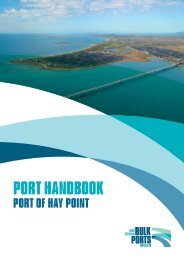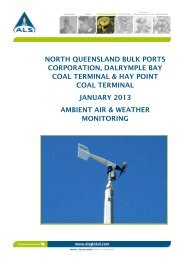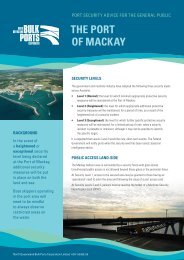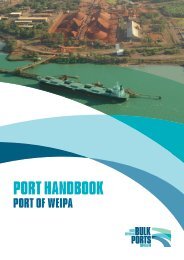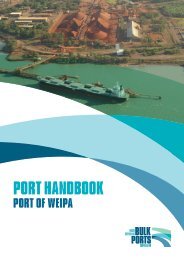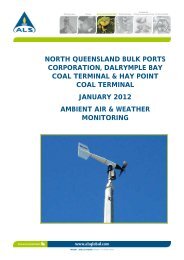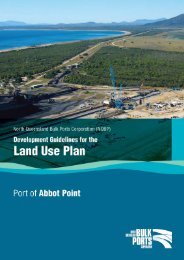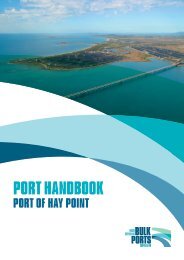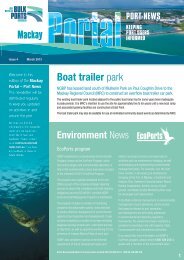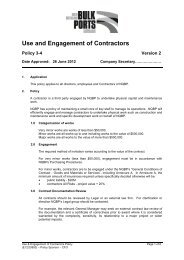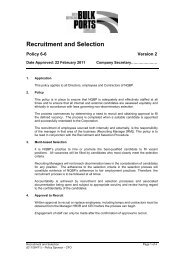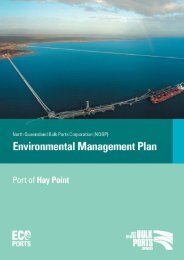Terms of Reference - North Queensland Bulk Ports Corporation
Terms of Reference - North Queensland Bulk Ports Corporation
Terms of Reference - North Queensland Bulk Ports Corporation
- No tags were found...
Create successful ePaper yourself
Turn your PDF publications into a flip-book with our unique Google optimized e-Paper software.
8. Hazard and risk8.1. Hazard and risk assessmentDescribe the potential hazards and risks to people and property that may be associatedwith the construction and operation <strong>of</strong> the project, which may include but are notrestricted to:• potential hazards, accidents, spillages and abnormal events that may occur duringall stages <strong>of</strong> the project, including possible frequency <strong>of</strong> occurrence• all hazardous substances to be used, stored, processed or produced and the rate <strong>of</strong>usage• potential wildlife hazards, natural events, seasonal conditions, extremes <strong>of</strong> climateand natural or induced hazards, and implications related to climate change.Undertake a preliminary risk assessment for all components <strong>of</strong> the project, as part <strong>of</strong>the EIS process in accordance with Australia/New Zealand AS/NZS ISO 31000:2009Risk management—Principles and guidelines (Standards Australia & Standards NewZealand 2009). With respect to risk assessment, the EIS should:• deal comprehensively with external and on-site risks including transport risks• assess risks during the construction, operation and decommissioning stages <strong>of</strong> theproject• include an analysis <strong>of</strong> the consequences <strong>of</strong> each hazard on safety in the projectarea, examining the likelihood <strong>of</strong> both individual and collective consequences,involving injuries and fatalities to workers and to the public• present levels <strong>of</strong> risks from the above analysis.Provide details on the risk management measures that would reduce the likelihood andseverity <strong>of</strong> hazards, consequences and risks to persons, within and adjacent to theproject area(s).Present a comparison <strong>of</strong> assessed and mitigated risks with acceptable risk criteria forland uses in and adjacent to the project areas.The risk assessment is to address the potential impacts that may occur on the normalon-site day-to-day activities during the construction and/or operation <strong>of</strong> the facilities.Furthermore, determine the level <strong>of</strong> change that may result on the risk contours <strong>of</strong>other relevant existing or proposed industrial facilities in the area, as a result <strong>of</strong> theproposed project (where details <strong>of</strong> such proposed facilities are provided by DSDIP orotherwise published).Individual risk criteria should be used to limit risks to individual workers and members<strong>of</strong> the public. Societal risk criteria should be used to limit risk to the affected populationas a whole.Identify and adopt, where appropriate, any changes to operating or storage proceduresthat would reduce the possibility <strong>of</strong> these events occurring, or reduce the severity <strong>of</strong> theevents should they occur.Contents <strong>of</strong> the EISDudgeon Point Coal Terminals Project<strong>Terms</strong> <strong>of</strong> reference for an environmental impact statement- 65 -



